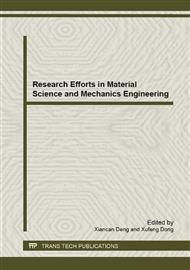p.200
p.204
p.209
p.214
p.219
p.224
p.229
p.234
p.243
Non-Linear Vibration Modeling and Simulation of a Gear Pair Based on ADAMS and Simulink
Abstract:
To set up the virtual prototype of a gear train system in the dynamic analysis software ADAMS, the torsional vibration model of a gear pair was transformed into an equivalent transmission model in which a multi-body model was established in ADAMS and its meshing force solution model was established in Simulink. The time-varying mesh stiffness, gear clearance, meshing errors and other non-linear factors can be included in the gear meshing feedback model, more importantly, the influence of gear speed fluctuation on the time-varying mesh stiffness was taken into consideration. The simulation results contrastively prove the feasibility of co-simulation for obtaining the dynamic characteristics of gear meshing process.
Info:
Periodical:
Pages:
219-223
Citation:
Online since:
April 2013
Authors:
Price:
Сopyright:
© 2013 Trans Tech Publications Ltd. All Rights Reserved
Share:
Citation:


